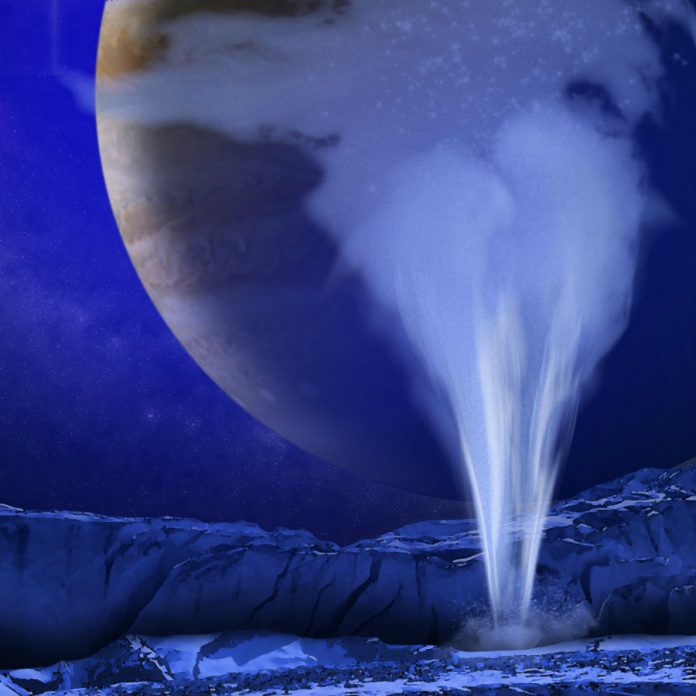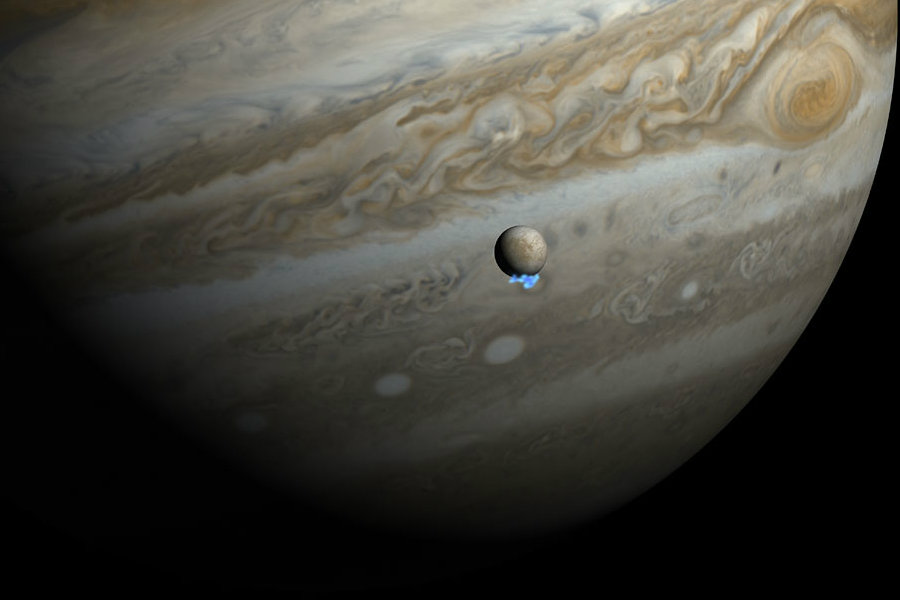
Scientists using NASA’s Hubble telescope have detected potential plumes of water vapor ejected from the surface of Europa, Jupiter’s renowned icy moon. The sighting provides further evidence about the moon’s theorized subsurface activity and gives a great outlook for scientists expecting to find some form of life beneath its thick ice crust.
The announcement by the NASA team follows an official call for the media last week, stating that the government agency had exciting news about “surprising activity” coming from the celestial body. The images captured by the Hubble telescope also support an earlier spotting of the water vapor geysers back in 2012 by a different team of scientists using another method.
NASA’s revelations about Europa also come at a time when China has begun testing the world’s largest radio telescope, a super-structure devised to look for alien life and potentially habitable planets. Given Europa’s massive subsurface ocean and the recent news on its activity, it would make it a prime target for the new telescope for it to examine it up close as well.
NASA’s images represent a good prospect for alien life on Europa
While Monday’s announcement marks the second occasion in which the steam jets have been detected by astronomers, it remains to be confirmed if there is indeed an ocean beneath the ice layer that covers Europa.
Scientists say that now it is more likely than ever and that people can be enthusiastic about finding life some day on the Jupiter satellite. Geoff Yoder, a chief representative for NASA’s Science Mission Directorate in Washington, shared the agency’s impressions on the sightings.
“EUROPA’S OCEAN IS CONSIDERED TO BE ONE OF THE MOST PROMISING PLACES THAT COULD POTENTIALLY HARBOR LIFE IN THE SOLAR SYSTEM. THESE PLUMES, IF THEY DO INDEED EXIST, MAY PROVIDE ANOTHER WAY TO SAMPLE EUROPA’S SUBSURFACE,” Yoder said.

Europa’s vapor water plumes could serve to probe the moon’s ocean
NASA announced last year that they would send an unmanned mission to Europa in the future to further explore the puzzling Jupiter moon. However, the budget cuts suffered by the cosmic exploration agency have taken its toll on the Europa Clipper mission too, delaying the expected launch date to the year 2022. The probe would reach the icy satellite a couple of years later, but it won’t even be able to collect samples given Jupiter’s hazardous radiation levels.
Not that it would be an easy task if there weren’t any dangerous radiation to deal with since astronomers speculate that the layer of solid ice covering Europa’s surface is at least 60 miles thick. Drilling would take a significant amount of effort and advanced technology, but the vapor spouts coming from the icy crust rise at altitudes as high as 125 miles, making it a viable alternative to acquiring samples of the underground ocean, and maybe, hints of life in it.
The complete findings of the team led by William Sparks will be published in the upcoming issue of NASA’s Astrophysical Journal on September 29.
Source: NASA











